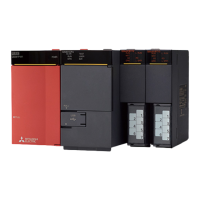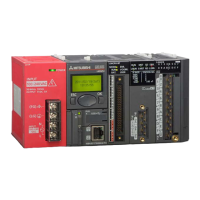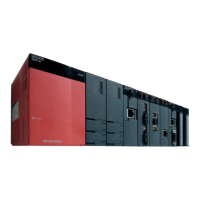12
TROUBLESHOOTING
12.1 Troubleshooting Basics
12 - 1
9
EMC AND LOW
VOLTAGE
DIRECTIVES
10
LOADING AND
INSTALLATION
11
MAINTENANCE AND
INSPECTION
12
TROUBLESHOOTING APPENDICES INDEX
CHAPTER12 TROUBLESHOOTING
This section describes the various types of trouble that occur when the system is
operated, and causes and remedies of these troubles.
12.1 Troubleshooting Basics
In order to increase the reliability of the system, not only highly reliable devices are used
but also the speedy startup of the system after the occurrence of trouble becomes an
important factor.
To start up the system speedily, the cause of the trouble must be located and eliminated
correctly.
The basic three points that must be followed in the troubleshooting are as follows.
(1) Visual inspection
Visually check the following.
1) Movement of sequencer (stopped condition, operating condition)
2) Power supply on/off
3) Status of input/output devices
4) Installation condition of the power supply module, CPU module, intelligent
function module to the base unit
5) Status of wiring (power cables, CC-Link dedicated cables)
6) Display status of various types of indicators ("POWER" LED, "RUN" LED,
"ERR." LED)
7) Status of setting of various types of set switches
After checking 1) to 7), connect GX Developer and monitor the operating
condition and program contents of the PLC.
(2) Check of trouble
Check to see how the operating condition of the PLC varies while the PLC is operated
as follows.
1) Set the CPU module RUN/STOP/RESET switch to "STOP".
2) Reset the trouble with the CPU module RUN/STOP/RESET switch.
( CHAPTER 4)
3) Turn ON and OFF the power supplied to the power supply module.
(3) Narrowing down the range of trouble occurrence causes.
Estimate the troubled part in accordance with items (1) and (2) above.
1) PLC or external devices
2) CPU module or others
3) Sequence program

